
The Kagyu school, also transliterated as Kagyü, or Kagyud, which translates to "Oral Lineage" or "Whispered Transmission" school, is one of the main schools of Tibetan Buddhism. The Kagyu lineages trace themselves back to the 11th century Indian Mahasiddhas Naropa, Maitripa and the yogini Niguma, via their student Marpa Lotsawa (1012–1097), who brought their teachings to Tibet. Marpa's student Milarepa was also an influential poet and teacher.

Mahāmudrā literally means "great seal" or "great imprint" and refers to the fact that "all phenomena inevitably are stamped by the fact of wisdom and emptiness inseparable". Mahāmudrā is a multivalent term of great importance in later Indian Buddhism and Tibetan Buddhism which "also occurs occasionally in Hindu and East Asian Buddhist esotericism."

Drikung Kagyü or Drigung Kagyü is one of the eight "minor" lineages of the Kagyu school of Tibetan Buddhism. "Major" here refers to those Kagyü lineages founded by the immediate disciples of Gampopa (1079-1153), while "minor" refers to all the lineages founded by disciples of Gampopa's main disciple, Phagmo Drupa (1110-1170). One of these disciples, Jigten Sumgön (1143-1217), is the founder of Drikung.

Thrangu Rinpoche was born in Kham, Tibet. He was deemed to be a prominent tulku in the Kagyu school of Tibetan Buddhism, the ninth reincarnation in his particular line. His full name and title was the Very Venerable Ninth Khenchen Thrangu Tulku, Karma Lodrö Lungrik Maway Senge. The academic title Khenchen denotes great scholarly accomplishment, and the term Rinpoche is a Tibetan devotional title which may be accorded to respected teachers and exemplars.
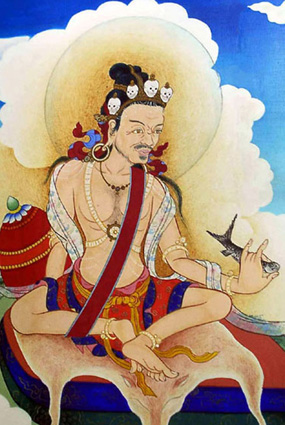
Tilopa was a Bengali Buddhist tantric mahasiddha who lived along the Ganges River in India during the medieval era. He practised Anuttarayoga Tantra, a set of spiritual practices intended to accelerate the process of attaining Buddhahood. He became a holder of all the tantric lineages, possibly the only person in his day to do so. In addition to the way of insight and Mahamudra, Tilopa learned and passed on the Way of Methods and guru yoga. Naropa is considered his main student.

Karma Kagyu, or Kamtsang Kagyu, is a widely practiced and probably the second-largest lineage within the Kagyu school, one of the four major schools of Tibetan Buddhism. The lineage has long-standing monasteries in Tibet, China, Russia, Mongolia, India, Nepal and Bhutan, with current centres in over 60 countries. The spiritual head of the Karma Kagyu is the Gyalwa Karmapa; the 2nd among the 10 Karmapas had been the principal spiritual advisors to successive emperors of China. The Karma Kagyu are sometimes called the "Black Hat" lamas, in reference to the Black Crown worn by the Karmapa.

Jamyang Khyentse Wangpo, also known by his tertön title, Pema Ösel Dongak Lingpa, was a teacher, scholar and tertön of 19th-century Tibet. He was a leading figure in the Rimé movement.
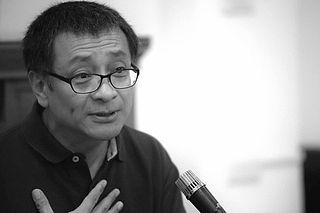
The 7th Dzogchen Ponlop is an abbot of Dzogchen Monastery, founder and spiritual director of Nalandabodhi, founder of Nītārtha Institute for Higher Buddhist Studies, a leading Tibetan Buddhist scholar, and a meditation master. He is one of the highest tülkus in the Nyingma lineage and an accomplished Karma Kagyu lineage holder.

Khenpo Tsültrim Gyamtso Rinpoche is a prominent scholar yogi in the Kagyu tradition of Tibetan Buddhism. He teaches widely in the West, often through songs of realization, his own as well as those composed by Milarepa and other masters of the past. "Tsültrim Gyamtso" translates to English as "Ocean of Ethical Conduct".
Traleg Kyabgon Rinpoche (1955–2012) was the ninth incarnation of the Traleg tulku line, a line of high lamas in the Kagyu lineage of Vajrayana. He was a pioneer in bringing Tibetan Buddhism to Australia.
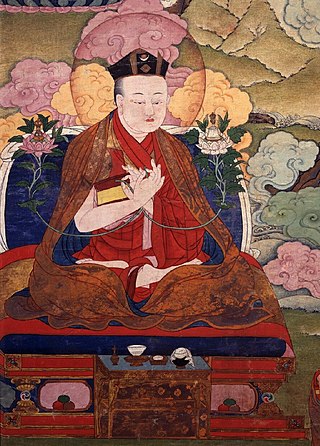
Rangjung Dorje (1284–1339) was the third Karmapa and an important figure in the history of Tibetan Buddhism, who helped to spread Buddha-nature teachings in Tibet.
Buddhism is the fourth largest religion in Ukraine. It has existed since the 19th and 20th century, after immigration from countries with Buddhist populations, mainly North Vietnam and Korea under Communist period. Although sources are not readily available, Buddhists are believed to constitute 0.1% of the total population in Ukraine.

Khenpo Karma Tharchin Rinpoche, widely known by his abbreviated name Khenpo Karthar Rinpoche, was a senior lama of the Karma Kagyu school of Tibetan Buddhism. Before his death he served as abbot of Karma Triyana Dharmachakra (KTD) Monastery in Woodstock, New York.

The Eighth Garchen Rinpoche, also called Garchen Triptrul Rinpoche, is a Tibetan Buddhist teacher in the Drikung Kagyu lineage. Born April 1936 in Nangchen, Kham, he is believed to be an incarnation of Siddha Gar Chodingpa, a heart-disciple of Jigten Sumgön, founder of the Drikung Kagyu lineage in the thirteenth century CE. He is also believed to have incarnated as Mahasiddha Aryadeva in ancient India - the lotus-born disciple of Nagarjuna himself. He was known as Lonpo Gar, the minister of Tibetan dharma king Songtsen Gampo in the seventh century CE.

Khenpo Gangshar Wangpo was a highly respected lama in Eastern Tibet and one of the primary teachers of Chögyam Trungpa Rinpoche and the 9th Thrangu Rinpoche. Khenpo Gangshar was trained in Shechen Monastery, a monastic center established in the end of the seventeenth century and part of the Mindröling lineage within the Nyingma tradition of Tibetan Buddhism.
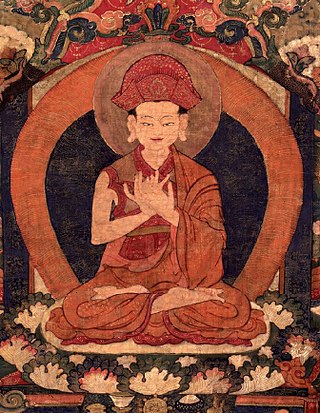
Jigten Sumgön or Jigten Gönpoའཇིག་རྟེན་གསུམ་མགོན (1143–1217) was the founder of the Drikung Kagyu lineage and main disciple of Phagmo Drupa. He founded Drikung Thil Monastery in 1179.
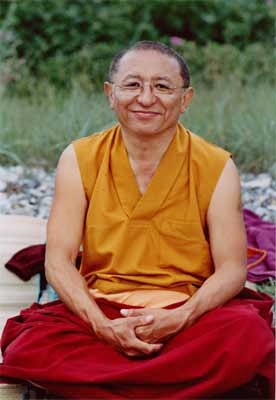
Chökyi Nyima Rinpoche is a Tibetan Buddhist teacher and meditation master. He is the abbot of Ka-Nying Shedrub Ling Monastery in Kathmandu, Nepal. He is the author of several books, founder of meditation centers around the world, and an international teacher.

Ayang Tulku Rinpoche is a Tibetan Buddhist lama.

The Drikungpa, or more formally the Drikung Kyabgön, is the head of the Drikung Kagyu, a sub-school of the Kagyu, itself one of the four major schools of Tibetan Buddhism.

The mind teachings of Tibet are a body of sacredly held instructions on the nature of mind and the practice of meditation on, or in accordance with, that nature. Although maintained and cultivated, to various degrees, within each of the major Tibetan Buddhist traditions, they are primarily associated with the mahamudra traditions of the Kagyu and the dzogchen traditions of the Nyingma.



















